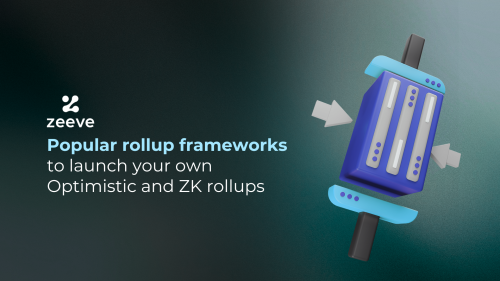
Various Rollup Frameworks for launching Optimistic and ZK Rollups
As rollups become the next hot topic in the blockchain scaling space, rollup solution providers have waged a supremacy war to simplify launching Optimistic and ZK rollup chains for enterprise use cases.
In this piece, we shall have a comprehensive look at some of the most prominent roll-up frameworks simplifying launching your roll-up chain for your Dapp on Optimistic and Zero Knowledge environment.
Top Rollup Frameworks For Launching Optimistic and ZK Rollups
We have broken down the framework into two sections:
(i) Smart-Contract rollups, which publish their entire blocks to a settlement layer for change of the state of the blockchain using the smart-contract functions and;
(ii) Sovereign Rollups, which do not use smart -contracts to interact with L1s. On the other hand, they use other blockchains for consensus and data availability but perform settlements on their own layer through a P2P node hosting and communication.
Frameworks for building Optimistic Smart Contract Roll-up
Op Stack
Op-Stack introduces modularity, which is at the core of running applications on top of a roll-up. The trade-off of such a practice is applications built on top of Op Stack rollup solutions have complete control over the software packages empowering their applications. Still, they do not lose control of roll-up interoperability while doing the same. So, in the near future, it will be very simple to skip between rollup solutions without having to interact with the Ethereum or other L1 chains or intermediaries in between which expose points of vulnerabilities.
Op Stack also has shared sequencing, which drastically optimizes the use of existing rollup infrastructure to support the concept of a superchain. For the value economics, Op Stack has proposed a shared sequencer subset, which ideally demands Op Token as a pledge for sequencing the transactions to be included in the block. In this way, the network shall drive the economies to scale its ecosystem.
Why Use Op-Stack?
Extensibility: Op Stack Code Base is modular and extensive, allowing other developers to deploy on top of it easily.
Simplicity: Code simplicity is at the crux of operation. Op Stack has used GETH Fork because it is less vulnerable to bugs and hacks.
Familiarity: Building on top of Op-Stack is fairly simple because it is very closely aligned with Ethereum.
Diversity: Op Stack also helps leverage diversity because multiple clients will be there to support the rollup ecosystem. For example, Op-Erigon is an alternative execution client for Op-Stack, and Magi is slated to join as an alternative roll-up client on Op-Stack.
Top Projects on Op Stack
- Base
- OpBNB
- World Coin
- Zora
- Magi
Arbitrum Orbit:
Arbitrum Orbit introduces a new paradigm in developing your own rollup solution where you do not need the permission of L2s to deploy your own L3 rollup solution. Therefore, Orbit enables permissionless rollup deployment. The outcome of such a practice will allow applications to scale in a linear and horizontal fashion to compete with the Internet scalability standards and own the roll-ups in the manner the application wants instead of the network predefining specific rules and guidelines as practiced in a decentralized ecosystem. As a result, it will be more than convenient for any Dapps to quickly deploy on top of a L3 roll-up chain like never before.
With such trade-offs, even the experience of forking will change, allowing developers to have greater control over their applications to respond to changing needs. The Orbit chain has introduced sequencers paying transaction fees in ETH to sustain the Orbit ecosystem. In addition, creating an L2 chain on Arbitrium similar to One or Nova would require permissions from the Arbitrium DAO. They shall do that through a governance proposal mechanism that requires holding 5 million tokens in the wallet. In this way, those projects bidding for space, similar to Polkadot Parachain bidding, shall move the ARB prices off the roof to encourage sequencers to continue sequencing blocks as floods of Dapps start using the Orbit ecosystem.
Why Use Orbit?
EVM Equivalence: Orbit uses the same Ethereum logic, making them highly compatible with EVM apps.
Independence: Arbitrium Orbit allows dapps deployed on the Arbitrium to have an independent roadmap different from the ecosystem. So, applications can introduce account abstraction even though it is not there on Ethereum on other L1 chains.
Lesser Gas: Arbitrium Orbit shall be isolated from Arbitrium L2 and ETH L1. As a result, the gas prices shall not be affected by any activity on L1 or L2.
Any Token Use: The user can predefine their own token for paying for the gas while sequencing.
Top Projects on Arbitrium Orbit
- Deri V4
- XAI
- Syndr
- Sanko GameCorp
- Hook Protocol
Frameworks for building Sovereign Optimistic Rollups
Rollkit
While rollups are mostly dependent on a specific DA layer, Rollkit allows multiple sequencing that can cater to the diverse needs of your project. The roll-up solutions will be independent of all its existing ecosystem to drive modularism over maximalism. As a result, the rollkit is neutral of the DA layer, and applications can use foundational developer tooling and their own consensus model to scale their applications without sharing computational storage, making applications much faster.
With roll kits, you can create your own chains, set up your own clauses, and integrate new features independently for building interchangeable rollup software for preserving the sovereignty of your project; however, in doing so, you do not compromise the security because ABCI-compatible state machines allow rollkit to mirror the security of the DA layer while processing settlements on their own chains.
This means trust-minimized token transfers can occur within the rollup network, essential for scaling dapps to infinite proportions. That’s the vision Rollkit wants to achieve, negating over-dependency on smart contracts that significantly impact time to market when launching solutions using rollups and slow down operations despite projects switching to L2s for high scalability and throughput. The payments within the rollkit ecosystem can be done in any token, giving it more leverage to present itself as a trust-minimized token transfer ecosystem.
Why Use Rollkit?
Shared Security: Rollkit enables even light clients to receive and verify proofs, which makes the rollkit ecosystem extremely decentralized and secure.
Higher Scalability: Rollkit uses its own computational storage space instead of the one shared by the DA layer. Due to this, applications enjoy infinite scalability, which can even match with Internet scalability.
Customization: Rollkit separates all four layers of DA, execution, proof systems, and sequencers as separate, allowing developers to enjoy greater customization and scale applications.
Quick Time to Market: Applications need not bootstrap validator sets, which can significantly reduce the cost of deploying rollups. As a result, you get better chances of marketing the application and expanding the business instead of focusing on technology stacks.
Top Projects on Rollkit
- Deku
Frameworks for building Zk- Smart Contract Rollups
Polygon CDK
For building the next-gen business ecosystem, Dapps need very high-end scalability with modularity but the ability to interoperate as one single ecosystem. Polygon CDK has helped Dapps scale linearly without settling for just one ecosystem, draining the liquidity.
With Polygon CDK, applications can create a specific rollup environment, choosing their own VM, operational mode, DA layer, sequencer types, and gas tokens as per their will.
Through this framework, Polygon CDK wants to achieve the core business functions that applications desire without compromising the user experience. Since the CDK offers modularity, developers have the discretion to choose rollup or Validium nodes, zkEVM, or other ZK-powered tools, and various data handling options that satisfy the demand for robust data availability and cost-effectiveness applications seek while developing the rollup environment for their use cases without having to build a walled garden ecosystem for their application. This means despite Polygon CDK allowing single applications to scale. It doesn’t limit them as separate islands but as interconnected masses of land.
Why Use Polygon CDK?
Edge Ecosystem: Polygon CDK uses Zk-Tech, which allows lightning-fast performance and the ability to interact with all other EVM equivalence environments.
Cryptographic Security: Polygon CDK doesn’t rely on validators but instead math to make the ecosystem secure.
Shared Security: Polygon CDK allows applications developed on top of it to enjoy shared security because EVM equivalence allows better interconnectivity with other ecosystems.
Interoperability: Despite launching your own standalone app, it is possible to communicate with other ecosystems and transact fluidly.
Top Projects on Polygon CDK
- Capx
- Gnosis Pay
- AaveGotchi
- Astar Network
- Canto Network
- Palm Network
Zk-Stack
The next big upgrade for rollups shall be where it can scale at large without sacrificing freedom and security. Zk-Stack champions full decentralization and scalability through decentralized sequencers, zkPorters, and community governance that hyper-bridges promise through their shared security, communication layer, and open-source stack to build purpose-specific L2 and L3 chains.
Developers have the discretion to use ZkSync Era Code, which offers advanced hyper scalability solutions solving pressing problems of the L1s and other L2 bridges that depend on intermediaries for cross-chain operations because they operate on top of fractal-like instances of Zk-EV, which means they can create as and when required without the need for permission.
The hyper scalability solutions, termed popularly as Hyper Bridges and Hyperchains, are built using hyperchain SDK, which allows developers to deploy wallet solutions as provided by the blockchain, or they can build one on their own as per application specifics. The key-trade off of wallets built on top of Zk-Stack is that they are standardized wallet solutions acceptable across all blockchains. As a result, a zero-fee settlement can occur because hyperchains implement native hyperbridges, which ensure instant settlements.
Zk-Stack will use its own native chains, which will significantly reduce the cost of transactions and help the ecosystem scale. In terms of developing a roll-up framework, Zk-Stack gives many chains, choices, and options that are so far absent in other rollup solutions.
Why Use Zk-Stack?
Seamless Interchain Connectivity: The tech stack of ZK-Stack has been designed to allow seamless interconnectivity using hyperchains and bridges at very low-cost operation.
Messaging Protocols: Proof aggregation for all chains operating on top of the Zk-Stack hyperbridges will be submitted as a single batched settlement on L1 instead of separate transactions for all the chains.
Sovereignty: Applications can enjoy full sovereignty hyperchains and have the ability to enter and exit the ecosystem as per their will.
Greater Customization: Zk-Stack allows for greater customization of Data Availability, transaction sequencing, and zkPorter technology within the Zk-Stack framework.
Projects with Hyperchain:
As of now, there is only one project that has launched its own zkSync Hyperchain. It’s GRVT- a hybrid derivative exchange. In the coming days, more projects are expected to launch their own Hyperchain L3s.
Frameworks for building Sovereign Zk- Rollups
Sovereign LABS
To experience rollups as the Internet of everything should be such that irrespective of what STFs or State Transition Function logic using the programming language you use, the rollups VM can easily validate the same with the VM layer on top of that, which is the DA layer and settle the transactions near instantly. However, the present state of the roll-ups is such that such state transitions require standardization, which can help them communicate easily with the DA layer. Sovereign LABS’ roll-up module separates STF, DA, and ZK-proof systems and nearly mirrors a Cosmos-like SDK for L1s to build one common rollup ecosystem for all the rollups, which ensures quick finality. As a result, Sovereign LABS, instead of working as a roll-up, sounds much like an L1.
With such a trade-off it becomes extremely simple to develop your rollup solutions independent of the settlement layer guidelines and the sovereign LABS roll-up development module through a sov-modules-api ensure that all the separate functional systems can exist independently allowing forking whenever needed but remain extremely communicative for an instantaneous state transition through its separate boilerplate components which do not require developers to be cryptography experts; rather than can write the logic in common RUST or even C++ and communicate with any DA layer irrespective of the environment they use. .
For providing a near instantaneous state transition, Sovereign LABS roll-up stack provides a state storage layer backed by JellyFish Merkle Tree and other tooling solutions that quickly communicate with state transition functions and allows any roll-up ecosystem or a DA layer to get connected to the sovereign LABS roll-up interface. The process helps in easily storing the chain data in the storage server and allows the rollup ecosystem to serve RPC requests coming from any DA environment for faster settlements. Sovereign LABS to help build internet of roll ups use roll-up adapters which allow any application to build and deploy their own roll-up solution to help end up as an Internet of roll-up ecosystem.
Why Use Sovereign LABS?
Guaranteed Scalability: Sovereign SDK ensures that your application need not have to suffer at the hands of its growth. It is done by providing a scalable, verifiable, and censorship-resistant backend solution that helps application scale.
No validator Bootstrapping: Developing rollups on top of Sovereign LABS’ SDK eliminates the need to have specific validators for your application use -cases.
Fast & Cheap Settlements: The settlements are near instantaneous and users will not have to wait for weeks to withdraw funds
Less Risk: It is easy to pick any DA layer which completely eliminates the possibility of any risk whatsoever.
Top Projects on Sovereign LABS
- Chainway
- Utopia P2P ecosystem
Starknet
For building a near infinite scalability for applications, instead of posting transactions as single bundles on the L2 layer, a better approach to scaling in not 100x but 1000x could supercharge application’s growth potential. Starknet has upped the ante of building a multi-layer thesis on top of the DA layer while using a single recursive proof protocol which shall provide a new venture for scaling to infinity. Due to this method, the number of transactions that can be published on the DA layer will increase exponentially like never before.
Along with this, since building rollup solutions are associated with a very high cost of investments, Starknet reduces that by optimizing the cost, latency and computational storage. With time, it is expected that the current bridging system that roll-ups use which involve regular interaction with a verifiable DA layer isn’t interchangeable.
But StarkNet could allow early entry and exit independent of multiple layers within the network through recursive proof protocols to ensure near instantaneous settlements on rollups independent of the environment in which they operate. In this way, Starknet could potentially help L1’s scale and at the same time build another independent L3 network for intercommunication Roll-up ecosystem aiding quick entry and exit.
Starknet is also proposing a decentralized sequencer set which can completely overhaul the present narrative of a censored roll-up environment.
Why Use Starknet?
Own Language: Starknet has its own custom programming language CAIRO that supercharges development. Due to this, the developers can use their own components independent of the L1’s for scaling their applications.
Privacy Preserving Method: StarkNet uses privacy preserving methods with near infinite scalability which can help host a whole new range of applications and use-cases.
Security: StarkNet inherits the security of DA while providing near infinite scalability and transacting on StarkNet can reduce the network fees by 95%.
Top Projects on Starknet
- Jediswap
- Morphine
- Orbiter Finance
- DiversiFi
Here’s a TL, DR:
| Rollup Type | Main thesis | Key Features | Examples | |
| OP Stack | Optimistic Smart Contract Rollup | Introduces modularity and shared sequencing to optimize rollup infrastructure | Extensibility, simplicity, familiarity with Ethereum, diversity of clients | Base, OpBNB, World Coin, Zora, Magi |
| Arbitrum Orbit | Optimistic Smart Contract Rollup | Allows permissionless rollup deployment for linear horizontal scaling | EVM equivalence, independence, lower gas fees, custom tokens | Deri V4, XAI, Syndr, Sanko GameCorp, Hook Protocol |
| Rollkit | Optimistic Sovereign Rollup | Separates all layers for customization without compromising shared security | Shared security, higher scalability, customization, faster time to market | Pocket, Deku |
| Polygon CDK | ZK Smart Contract Rollup | Modular framework to build high-scalability rollups that can still interoperate | Edge ecosystem, cryptographic security, shared security, interoperability | Capx, Gnosis Pay, AaveGotchi, Astar Network, Canto Network, Palm Network |
| zkStack | ZK Smart Contract Rollup | Full decentralization and infinite scalability with decentralized components | Seamless interchain connectivity, aggregated settlements, sovereignty, customization | GRVT |
| Sovereign labs | ZK Sovereign Rollup | Separates components for guaranteed scalability without bootstrapping validators | Guaranteed scalability, no validator bootstrapping, fast cheap settlements, less risk | Chainway, Utopia P2P |
| Starknet | ZK Sovereign Rollup | Uses recursive proofs for exponential scaling with custom language | Own language, privacy preservation, security | Jediswap, Morphine, Orbiter Finance, DiversiFi |
Launch your own OP and ZK Rollup with Zeeve:
A long article! Hope you have understood all the popular frameworks used today to create smart contracts and sovereign Optimistic and ZK Rollup chains. We have covered in brief the thesis, benefits, and projects that are building on the OP Stack framework, Arbitrum Orbit, Polygon CDK, zkStack, and others. Now, which one is better suitability for your dApp, that depends on your business application, familiarity with multiple SDKs, your ecosystem preference, etc.
No matter which framework you choose to build with, which modular components you want for your execution environment, sequencers, and DA, Zeeve gives you access to all of that with no-code setup, additional infrastructures(Faucets, block explorers, indexers, wallet support, etc) enterprise-grade security, 99.9% uptime guarantee with enterprise SLA.
Need help choosing the right framework for your rollup chain? Get in touch with us and Zeeve experts can help you identify what is optimum for your application. Go to production faster, save on deployment and recurring management costs. Try Zeeve’s Rollups-as-a-service(RaaS) now.



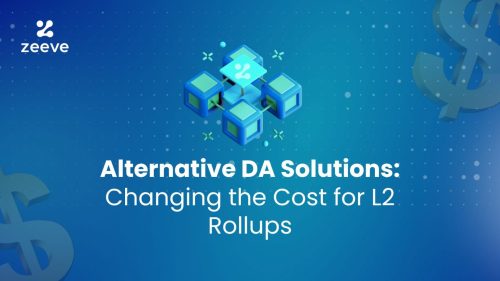
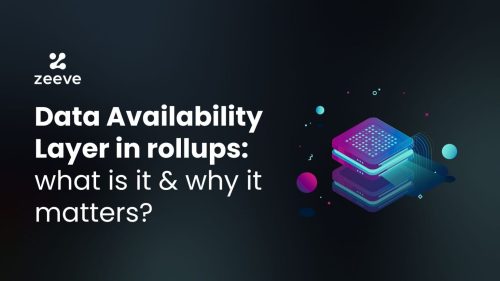
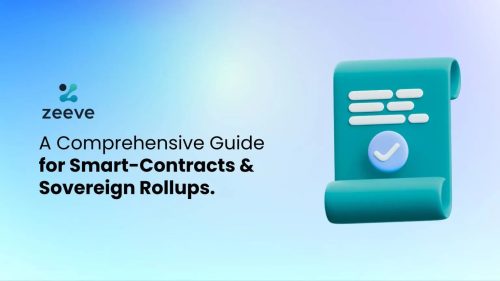
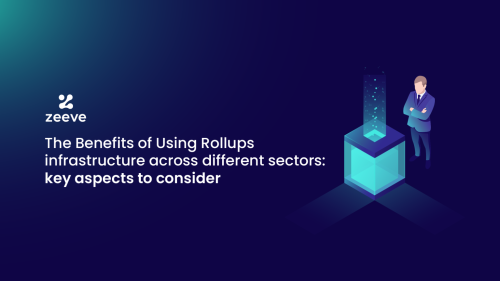
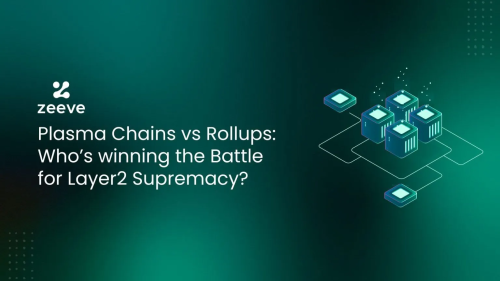
Responses